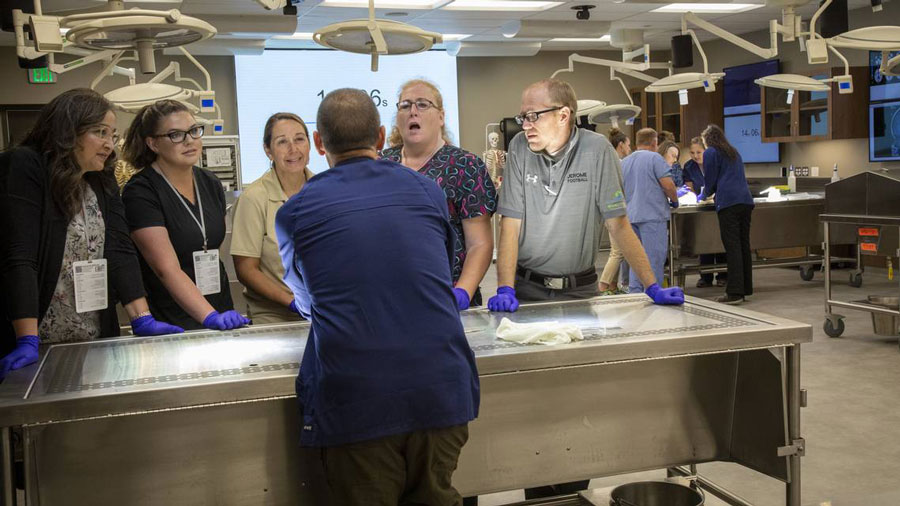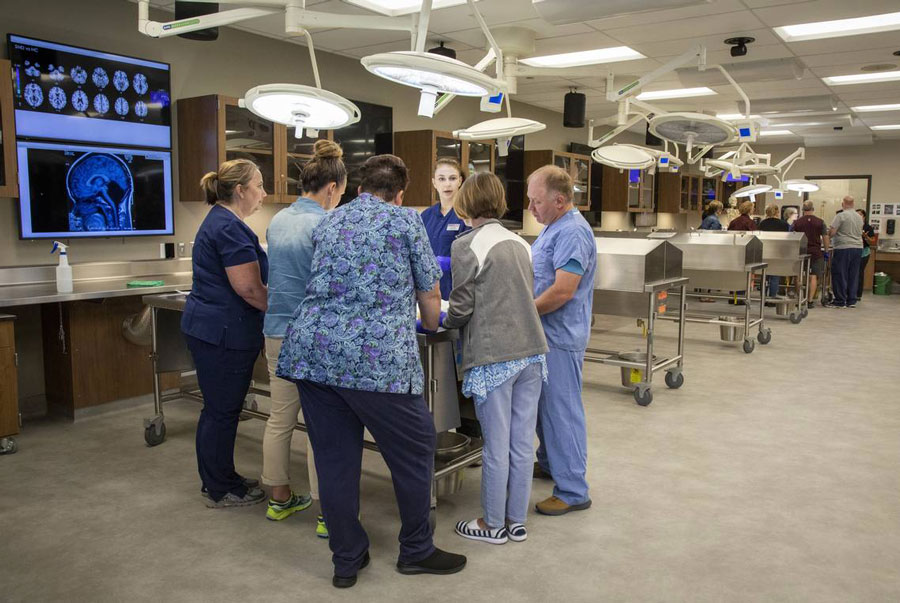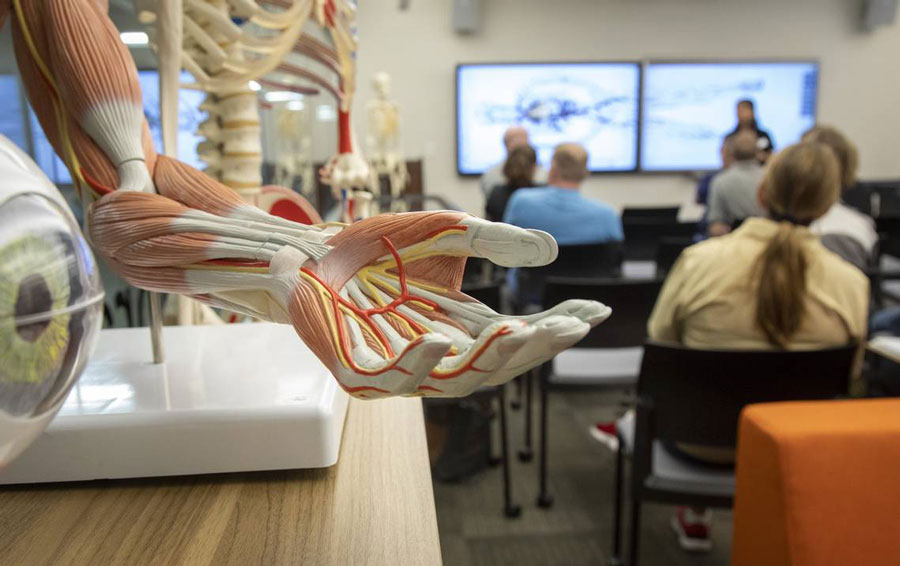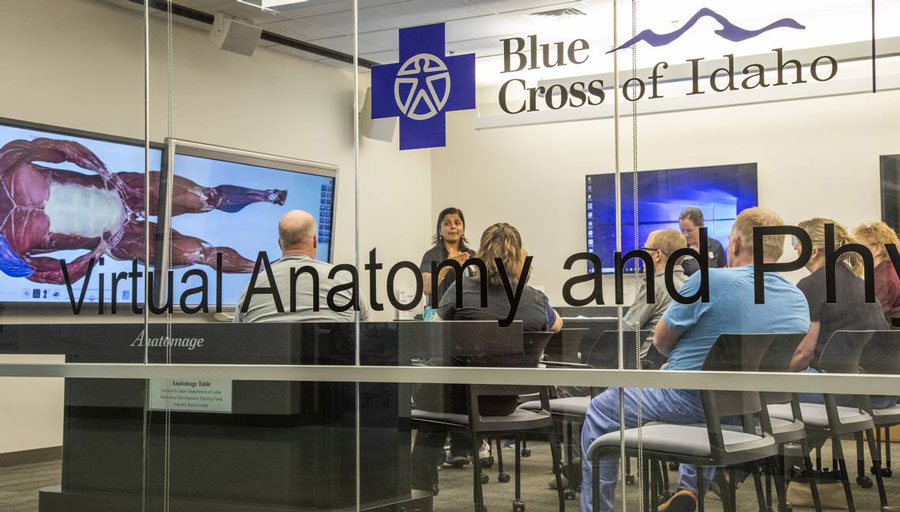Save on funeral costs and serve Idaho education. How? Donate your body to science.
Published at | Updated at
MERIDIAN (Idaho Statesman) — Sure, you’re an organ donor. You checked the box when renewing your driver’s license to donate things such as your kidneys and corneas. But some medical educators at Idaho State University want your whole body.
Hundreds of people, from elementary school students to practicing medical professionals, come through the university’s anatomy and physiology laboratories in Meridian every year to learn more about the human body. The labs rely on donated bodies — cadavers — to teach them.
There is a growing need for cadavers to train Idaho medical professionals to keep pace with the growing population, and there is a shortage of donated bodies.
“Donation is important, because it tremendously enhances the educational opportunity for our learners,” said Noah Harper, associate manager of the L.S. and Aline W. Skaggs Treasure Valley Anatomy and Physiology Laboratories.
Idaho State recently added a 4,000-square-foot anatomy lab with 12 education stations for human-tissue dissection.
“We’ve expanded and almost doubled in size and that relates to the demand,” Harper said. “In Idaho we know the doctor-to-patient ratios are poor when we compare to national averages. Our labs are part of the solution to provide good-quality foundational clinical medicine.”
More than 1,800 students will come through the labs this year, he said.
Harper said the labs offer educational tools for learners of all ages, from accurate models of the heart for elementary school students to whole-body dissections for medical students and medical professionals seeking continuing-education opportunities.
“We’re not all built the same,” he said. “It is important for students to see these differences while in medical school, and donated bodies offer a way to see how we can all be different.”
The labs’ state-of-the-art technology allows dissections to be streamed to other sites across the state.
“There are places across Idaho where students may not ever have an opportunity to get laboratory experience,” Harper said. “We have developed recorded and live-streamed content for distance learning for high school students in rural Idaho.”

CADAVERS HELP IDAHO TEACHERS
The Idaho Statesman toured the laboratories the same day as a group of educators who teach health classes across the state. The teachers chose to come to the labs as a field trip.
One attendee was Irene Maxfield, a dental hygienist who teaches an elective course in health professions to high school students in the Boise school district. In February, Maxfield plans to bring her students to the labs.
“For the students, you can see it on the screen all you want, you can you can hear it in a classroom,” Maxfield said. “But in a lab setting, it looks completely different. So students can better decide, ‘Oh, yeah, that’s definitely what I want to do,’ or say, ‘That’s not for me.’ Everybody needs that those realistic opportunities to make good career decisions.”
HOW TO DONATE YOUR BODY TO SCIENCE
In 2018, more than 145 million adults were registered as organ donors in the U.S., according to the U.S. Department of Health and Human Services. But only about 20,000 people in the U.S. each year donate their bodies to science, according to the Harvard Business School. (The federal government does not track whole-body donations).
Scandals involving the sale of body parts on the black market have increased distrust in whole-body donation programs. But Harper says there are legal and responsible facilities accepting bodies donated to science.
“It is very important if you are considering donation to read the fine print and understand what the agency plans to do with your body from start to finish,” he said. “And consider your personal and family values after death.”
ISU’s anatomy lab works with the University of Utah and the University of Washington body-donation programs.
“We only use bodies donated through informed consent,” Harper said. “These donations are real humans. They are brothers, daughters, uncles, mothers and so much more.”

To begin the process of donating, contact a facility that accepts whole body donations. There is none in Idaho. The University of Utah is the closest facility for most people living in Idaho.
Idaho State University does not accept whole body donations, but Harper can provide information about why ISU partners with the University of Utah program.
Kerry Peterson runs the body donor program at the University of Utah and can answer any questions about it. Call him at 801-581-6728 or email bodydonor@lists.utah.edu.
You cannot donate your body if you carry an infectious disease or if you die from trauma or require an autopsy after death.
“The mechanics of what happens in between that can vary widely from state to state, agency to agency, but it is imperative that donors really understand what they’re signing up for and have read all the literature and language involved in that agreement.” Harper said.
Donors can register their bodies at any time so that when they die, family members know to contact the chosen whole body donation program quickly.
The University of Utah offers free pickup within 50 miles of Salt Lake City. Donors elsewhere must arrange for the body to be delivered at their expense by a company that has a partnership with the university.
The University of Washington willed-body donation program (206-543-1860) pays the total cost of body transportation from neighboring states if the body meets the university’s medical requirements.
The body must be embalmed within 24 hours to be preserved for science. The embalming is done after a body is delivered to either university.

Most programs will not allow you to request how your body will be used after death, so consult with the donation program to discuss options of how your body could be used.
Donation can be an economical alternative to burial or cremation. Federal law prohibits payment for donated bodies or body parts, so your survivors won’t receive any money, but most programs offer free cremation once the body is no longer needed.
The average funeral in Idaho costs $7,045, according to the National Association of Funeral Directors.
Bodies can be stored at facilities like the one at ISU in Meridian for use up to 3 years later. ISU uses donated bodies in a respectful way, Harper said.
“Our donors are the centerpiece of our lab,” he said. “Our donors will literally touch indirectly, millions of lives by providing high-quality educational experiences to the folks that pass through our labs.”
Rachel Hager is writing for the Idaho Statesman this summer on a fellowship through the American Association for the Advancement of Science. She is a master’s student in ecology at Utah State University and earned a bachelor’s degree in biology at Bryn Mawr College.



